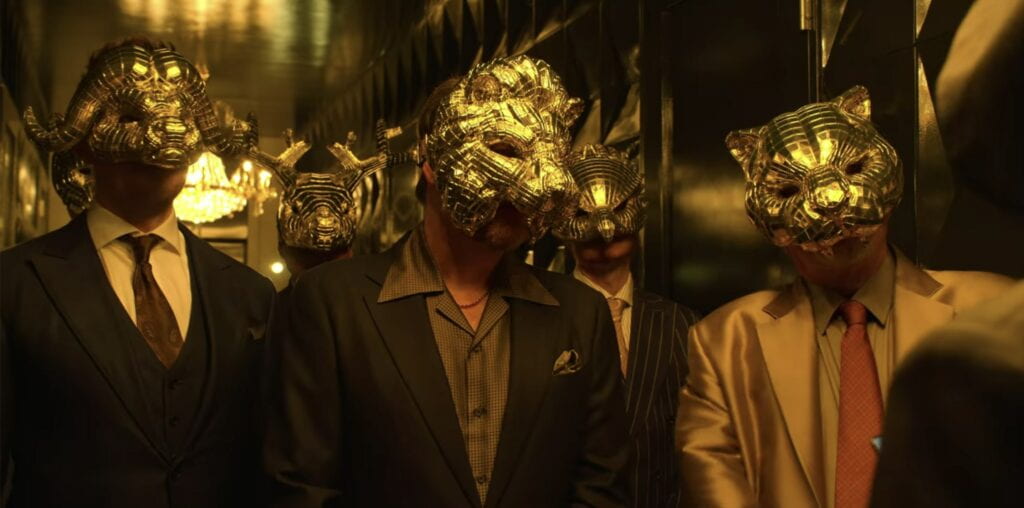Picture elaborate gatherings at an elaborate mansion by the beach. Gatherings where men show up wearing animal masks – their identities hidden, where women dress in cocktail dresses, where wine is served and conversation is made. However, the men sit around watching the women be presented on a platform, rating the women’s body parts on a scale of 1 to 10 and suggesting where improvements could be made. Women are “disciplined” or tamed and given advice on how to become “better” for the men. This happened in Pakistani director, Asim Abbasi’s web series Churails.

In Churails, the words used to describe the body parts of the women were not humanistic such as head or arm. Instead, words like “mane” and “rump”, which are typically used for animals’ body parts, were used by the masked men.
Despite how bizarre it seems, to me it is an accurate reflection of how oppressors have felt the need to tame and mould the oppressed to make them convenient and manageable, along with being similar to the oppressor. I believe this dehumanizes the oppressed, almost animalizing them.
This blog will draw a link between Mahmud and McClintock’s ideas of oppressors wanting to “tame” the oppressed, seeing them as animals, and it will also talk about the gendered aspect and relations of this taming with respect to McClintock’s analysis.
Mahmud (1999), drawing juxtapositions between Europe and the Others says, “Europe’s present becomes all Others’ future” (p. 1221). This was the dehumanizing notion that the colonies were wild and needed to be tamed to resemble Europe. This idea stuck with me because it made me realize that most systems of oppression function in a way where the oppressed are conditioned to think that the oppressor is superior, and is what the oppressed should strive to be like.
In our previous discussions, my discussion group and I have talked about how this phenomenon can be seen in globalization as well, where peripheral countries are applauded for following in the steps of European and western powers. It is also noteworthy that during colonialism, parts of the culture of the colonized were erased by the colonizer for being too “vulgar”. However, the same colonizers have now moved on to embrace the culture as sexual liberation. An example of this is how blouses were introduced in the subcontinent because sarees without blouses were deemed indecent or uncivilized. However, now the subcontinent is seen as backward in terms of sexual liberation.
However, there is a slight variation to this pattern. In some instances, it is implied that the oppressed can never be like the oppressor and hence should instead be tamed to be convenient and manageable for the oppressors.
This links us to McClintock’s ideas and parallels between gender and colonialism. McClintock assesses the ways in which the colonized were feminized. The women are depicted as vicious and wild at several different points. In the problematic analogies between colonialism and gender, there also seems to be an inherent need for the man (the colonizer) to tame and take control of the woman (the colonized). For example, it says that the world is feminized and spread out for male exploration (p. 23). This reduces the purpose of feminized entities to being mere subjects of the male gaze and male exploration.
However, the one aspect of McClintock’s analogy that really speaks to my conviction about the animalization of the women or the oppressed is Figure 1.1. Not only does this figure clearly create a dichotomy between male and female sexuality but also it underscores female sexuality, desire for self-defense, and subservience as vicious and villainous.

The woman in the foreground is shown as inviting and welcoming towards the man, while the women in the background, guarding the borders are seen to be devouring a man. It reminds me of how animals getting defensive around a predator are labeled as aggressive. The women are demonized for simply guarding the border. It appalls me how self-defense from women is vilified like this but the man being predatory is depicted as normal, natural behavior.
Labels that describe the oppressed as animalistic and uncivilized are used to gaslight the oppressed and to oppress them further. This gaslighting can be colonial or misogynistic. The worst part is, the gaslighting can be a complex intersection of the two, where women in colonies suffer disproportionately more.





